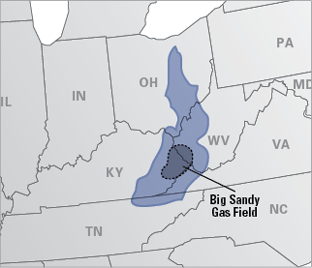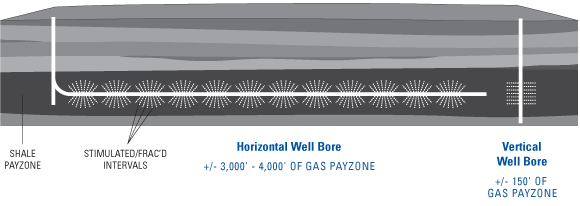Horizontal Drilling
New Technologies Unlock Mother Nature’s Buried Treasure

Proven production from the Lower Huron Shale is present within this area. The area in the middle of the Lower Huron Shale “Fairway” is the Big Sandy Gas Field, one of the largest natural gas fields in the Appalachian Basin.
Due to the success of Horizontal drilling and completion technologies, the Appalachian Basin’s unconventional shales are receiving worldwide attention as prolific gas bearing reservoirs. At the southern end of the basin, the Big Sandy Gas Field is in the heart of the Lower Huron Shale “Fairway”.
The Lower Huron Shale has been producing gas for decades from vertical drills, but the application of horizontal technologies has yielded staggering results. This gas rich reservoir varies in thickness. A typical vertical well might produce from a +/- 150′ section of gas bearing payzone. In contrast, a horizontal well bore can penetrate and produce from 3,000′ – 4,000′ or more of gas bearing payzone. Daily production rates and estimated ultimate recoveries from horizontal wells are significantly greater than those from vertical wells.
Another positive for this area, the Lower Huron is drilled on “air” and “frac’d with Nitrogen”; two methods considered less controversial by environmental advocates than “mud-drilling” and “hydro-frac’ing”.
Horizontal vs. Vertical Drilling

Royalty Owners | Operations: Drilling | Horizontal Drilling | Completion | Oil & Gas Revenue


